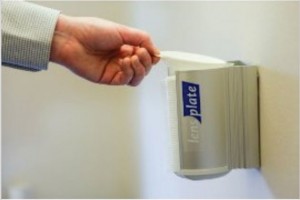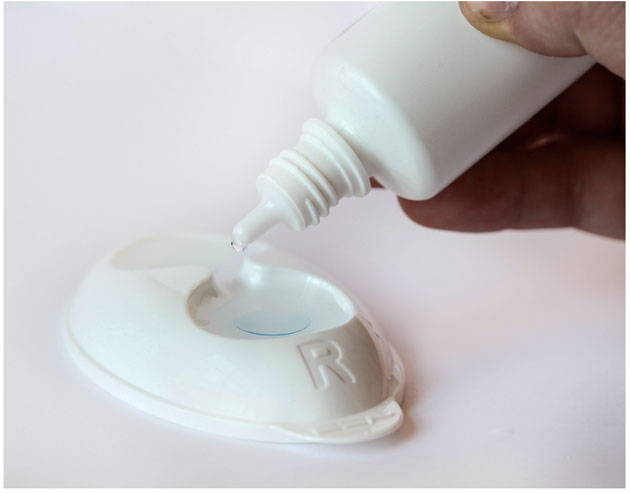 How many times has a patient turned up for an eye examination wearing contact lenses but with no lens case with them? How many times have you worked in a consulting room where there are opened starter packs with untouched solution inside and no lens case?
How many times has a patient turned up for an eye examination wearing contact lenses but with no lens case with them? How many times have you worked in a consulting room where there are opened starter packs with untouched solution inside and no lens case?
Now it may seem odd to suggest a disposable product that may actually reduce waste but the new LensPlate system does just that. When you need to temporarily store a patient’s lenses while you complete the assessment, you simply take the top LensPlate from the wall-mounted holder, fill with appropriate solution, and place the lenses in the clearly marked right and left hollows (see images below). Once done and the patient returns to their lenses, the LensPlate is binned.
There are 400 plates (representing 10 full holder’s worth) in each batch ordered, enough to last many weeks in even the busiest practices.
Professional behaviour
Repeat use of a contact lens case for different patients is obviously to be discouraged. However, the individual cost of a contact lens case and the reluctance to open a starter pack to use a case for just a few minutes might encourage some to be tempted to reuse cases. This represents a potential contamination hazard and, what’s more, simply looks less than professional to the patient. On the other hand, binning a lens case after just a few minutes’ use is wasteful.
Ian Cameron, managing director of Cameron Optometry that supplies the LensPlate system to the UK, has raised the issue of repeat use of potentially contaminating devices (tonometer heads, minims, lens cases and so on) via an email forum.
In one confidential survey of 100 independent practitioners, he found that ‘when no one is looking most people reuse single-use items’. Cameron was not surprised by this finding but felt that, with regard to contact lens case reuse, lack of a viable alternative was a major factor. The LensPlate system addresses this.
After using the system myself recently, I agree that it is easy to use and reduces the contamination risk. But I can also add that the system simply looks a better way of temporarily storing lenses in front of the patient for whom perceived hygiene is an essential part of modern contact lens practice.
For more information visit: www.lensplate.co.uk

